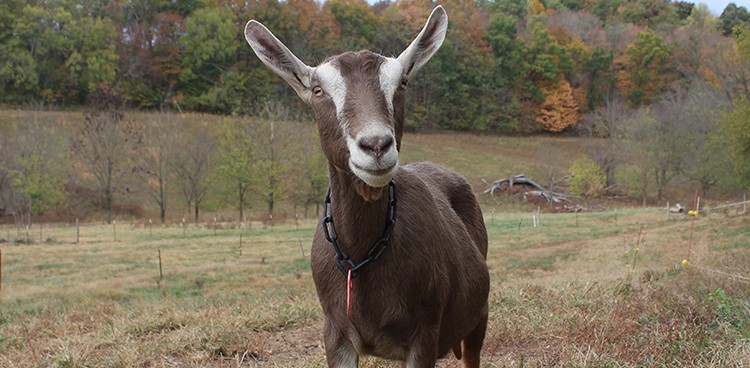
Records of Toggenburg goats—the first registered breed in the world—date back to the 17th century. However, the ruminants didn’t make it to US soil until 1893, when Ohioan William A. Shafor imported four purebreds from the United Kingdom. Other farmers followed suit, and by 1921 Toggenburgs became the first registered goat breed in America as well.
It’s easy to see why the animals grew in popularity. Hailing from Switzerland’s Toggenburg Valley (of course), the goats are sturdy—a necessity for thriving in the mountains. This hardiness makes Toggenburgs prime candidates for bigger dairy farms where they are around more animals and milked more often. Hobby farmers, meanwhile, benefit from the breed’s steady stream of milk (as opposed to the production ebbs and flows throughout the year that are common in other goats). And their small size is an economic boon for all, as the goats require less feed.
Appearance and Temperament
Toggenburg goats are known for their industriousness and intelligence. “They’re all business,” especially at milking time, says breeder Anna Thompson-Hajdik of Legendairy Toggenburgs in Wisconsin. “When you’re milking 200 goats and trying to get them in and out of the parlor quickly, [this breed] isn’t going to beat around the bush,” she adds. “They aren’t going to be all sassy and try to jump off the platform.”
Toggs—as they are affectionately called—are easily identified by signature face-framing white stripes that continue up their erect ears. Coat color ranges from light fawn to deep chocolate, and their hooves are blindingly white. Mature does are at least 26 inches tall and weigh 120 pounds and up, while males are at least 28 inches tall and weigh 145 pounds or more.
Milk and Cheese
There’s an industry perception that Togg milk is extra “goaty” and therefore causes gamy flavors in cheese. Dustin Noble of Noble Springs Dairy denounces this idea: “We’ve done some tests, and we can’t taste the difference [between] the Toggenburg milk [and] other breeds we raise. The Toggenburgs we have . . . their milk is fairly mild and sweet.” Noble crafts four different types of cheese, including fresh chèvre and feta, with a blend of milks from Toggs, Saanens, and Alpines at his Tennessee creamery.
A Toggenburg typically provides 2,283 pounds of milk annually—more than popular Nubian goats—and the breed gives a continual steady stream even when other goats slow down, often milking into the colder seasons. “They definitely seem to produce for us better during the winter months than some of the other breeds,” Noble says. “They grow out a thicker, longer coat, and that helps them get through the winters.” However, Togg milk fat and protein levels—3.1 and 2.7 percent, respectively—are lower than those of Nubians, Saanens, and other dairy goats. Because of this, Toggs weren’t exactly desirable when they were introduced in Great Britain in 1884. As a solution English farmers bred the animals with other types of goats to produce the stockier British Toggenburg (now considered a separate breed), which produces fattier milk (3.7 percent). The animal is now one of the most popular goats in the UK, and American breeders—such as Thompson-Hajdik and Noble—are currently working toward the same genetic goal in the United States.
These stateside farmers aren’t mixing Toggenburgs with other goat types, however. Instead, they’re mating select purebreds that happen to have higher milk fat levels, expecting the cheese-friendly genetics to carry on. They hope this selective breeding process will make Toggs even more attractive to caprine creameries.



